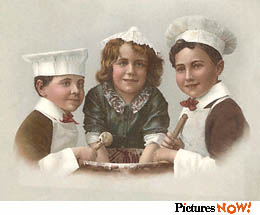HISTORY ABOUT PIADINA ROMAGNOLA
Piadina romagnola was born in Italy in 1200 B.C., when people, who lived in Lombard dweelings usually cooked buns without baking powder and mixed flour or outmeal with cereals and water over a special iron disk.
But Piadina was famous in the 4th century B.C. when, in the ancient Rome, piadina mixed with spelt was consecrated to Jupiter for wedding ceremonies, and was withdrawn from the poor tables of citizens and reserved to the priest tables.
In the Middle Ages, Piadina was one of the few foods which peasants had on their poor table, due to the big famine caused by the pestilence of 1300 A.C.; in that period people used all kinds of flour, icluding acorn flour. Besides, we can find some English words that refer to food such as the word "LORD", coming from the Anglo-Saxon language "HLAFORD", which means "owner of bread", and the word "LADY" from "HLAEFDIGE", which means "mixer of bread", the wife of Lord is the person who produces bread the husband is the one that lavishes it to peasants.
During the Renaissance, in Europe, "Ars Culinaria" developed. In every country more cooking schools, and many kinds of bread and buns appeared on the tables. Piadina is considered bread for poor people, so fewer people eat it.
But in the 20th century, due to an unexpected economic increase, and to an improved touristic offer a qualification of this food starts. It is offered the customers of numerous fast-foods specialized in Italian ethnic food like "piada" and "cassoni", which are appear in many places along the streets and in the squares of the Adriatic Coast.
Today "Piadina Romagnola" is a food which is eaten daily almost like bread; everybody can have piadina everywhere: in school factory cauteens, at home, in fast food restaurants and hotel. We usually find it in the artisan shop of "Piada & Cassoni" where it is cooked at the moment, otherwise we can buy it in all markets, supermarkets and so on. Piadina Romagnola has already exceeded all manufacturing process, and it is prepared in great artisan factories, and sold in national markets, especially in the north of Italy (500.000 pieces a week), or exported to Europe and to the U.S.A.(20.000.000 pieces a year).



Home Page
Adriatic Long Beach
New Economy
Buy on-line PIADINA ROMAGNOLA
